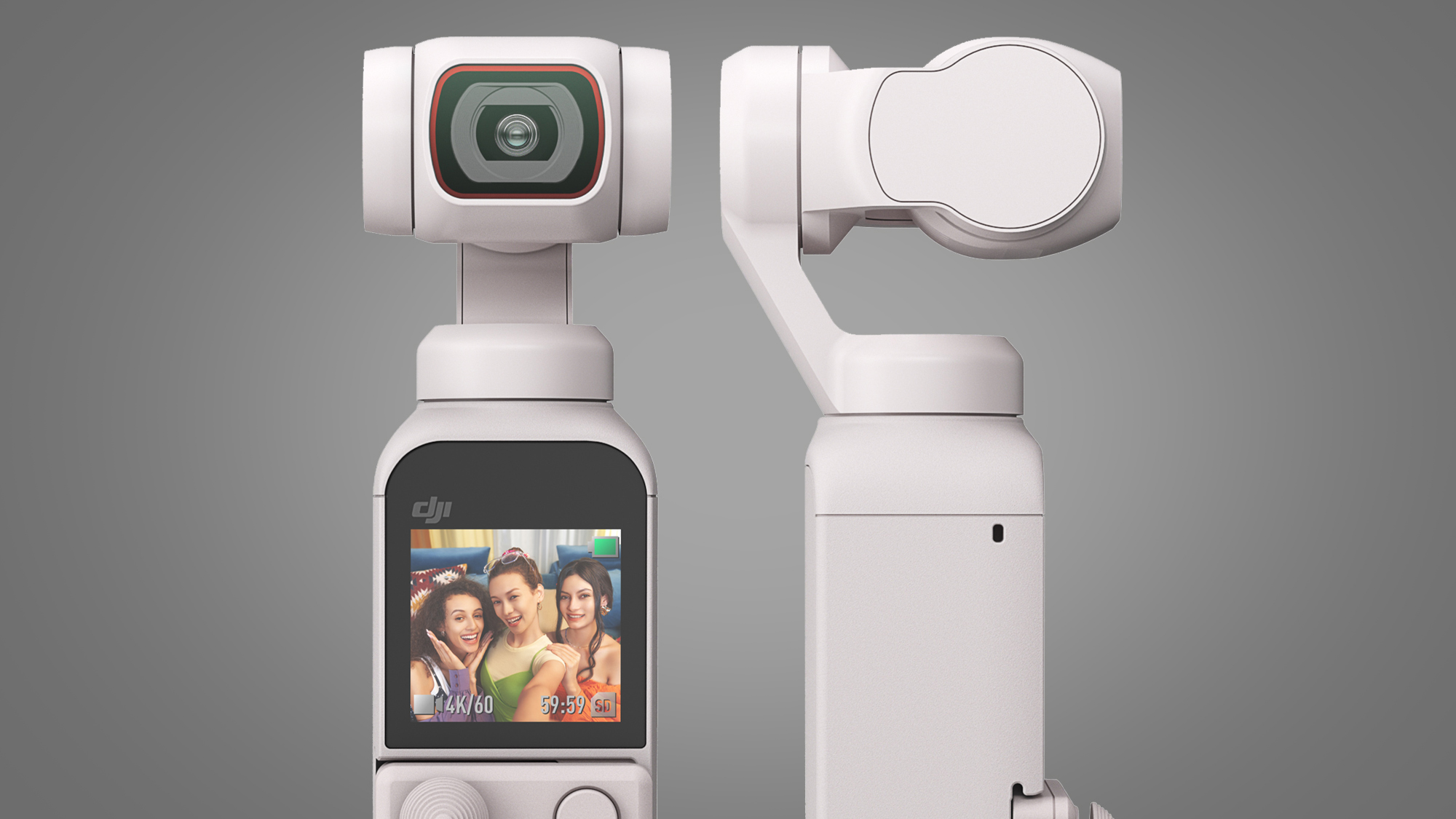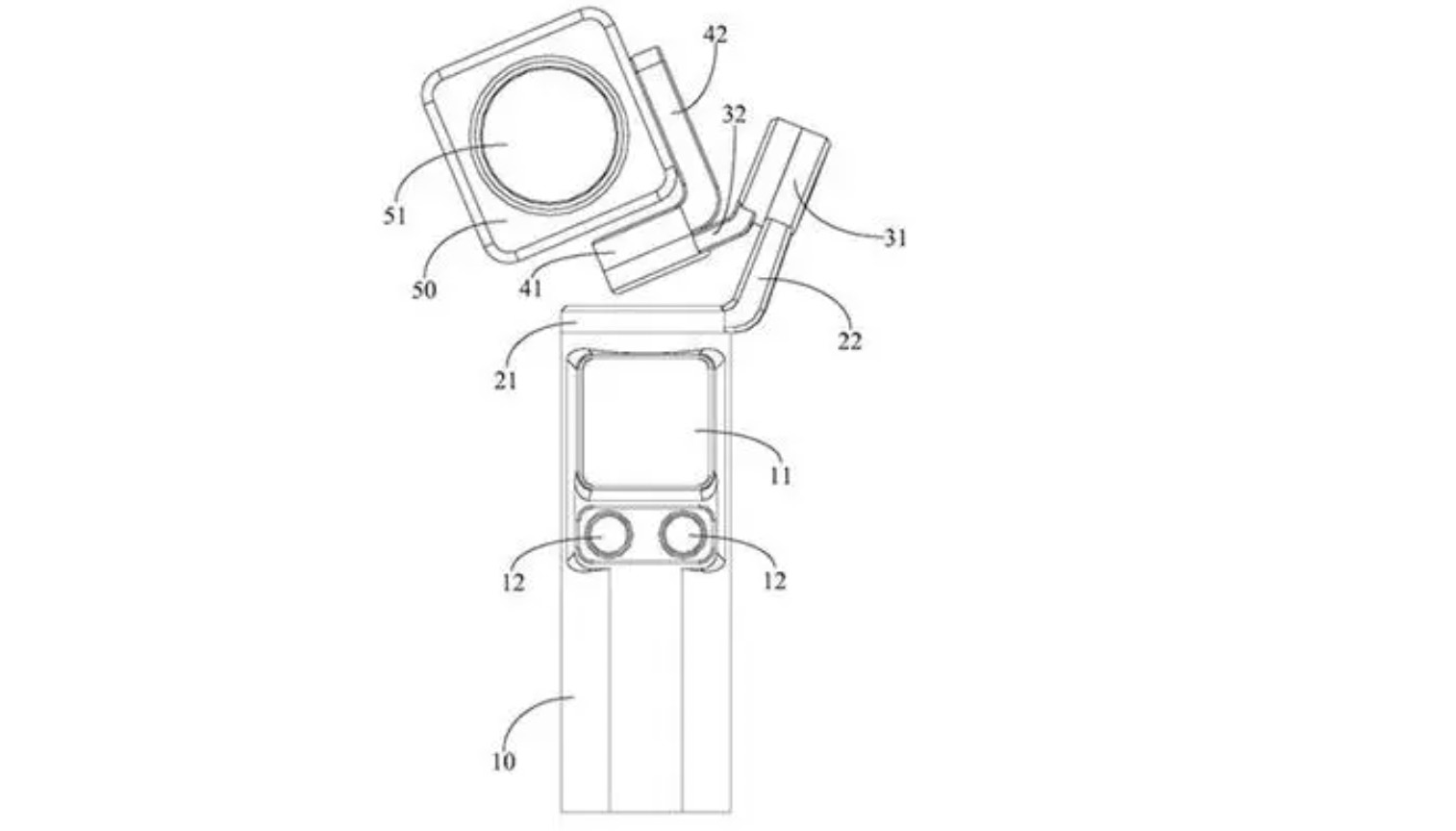
The DJI Pocket 2 is one of our picks as the best vlogging cameras available, and with the launch of the Pocket 3 potentially on the horizon, rumors about what the latest version of this pocket-sized camera will offer are quickly gaining momentum.
If you’re unfamiliar with the DJI Pocket 2, it’s a tiny camera balanced on a small gimbal and handle. Its design removes the complexity and inconvenience of using a camera on a full-size gimbal, to provide stabilized 4K video in a highly portable and easy-to-use device.
The DJI Pocket 2 is incredibly convenient, but it’s not without a handful of issues which we’re hoping to see resolved, and there are also some improvements we’d like to see with the release of the DJI Pocket 3.
DJI often exceeds expectations with new products in terms of features and functionality, although with a product like the Pocket 3 we have to be realistic about what can be achieved with such a small form factor.
There are a few directions in which the Pocket 3 could go in terms of camera features, functionality and design. The second iteration of the camera delivered a series of impressive upgrades and improvements over the original model, so we have high hopes for what DJI might pull out of the bag this time around.

DJI Pocket 3: price and availability
The DJI Pocket 3 is overdue based on previous releases – the DJI Pocket 2 was released back in 2020 – and we expect the new camera to be released in the last quarter of 2023.
Pricing will naturally depend on the upgrades and current market conditions, with price rises being an issue around the world. The current price of the Pocket 2 is $349 / £339 / AU$599, so the launch price for the Pocket 3 could be somewhere in the region of $449 / £439 / AU$749.
That would be quite an increase, but when you consider how other new DJI models have increased in price, it could be a conservative estimate. Although one thing’s for sure – pricing will need to remain consumer-friendly for the Pocket 3 to be competitive.

New and improved camera and sensor
In an ideal world, a 1-inch sensor would be a welcome and significant upgrade that would seriously improve image quality. This would potentially double the overall size of the device, but in theory, it could remain pocket-sized. So, while this is something we would like to see, it’s probably one for the best-case scenario wishlist.
A more realistic prospect is that the Pocket 3 will use the same 48MP 1/1.3-inch sensor as the DJI Mavic Mini 3 / 3 Pro and the medium-telephoto camera of the Mavic 3 Pro, which offers excellent image quality and noise handling. It could potentially even use a variant of the same camera as the Mavic Mini 3 / 3 Pro with its f/1.7 aperture.
Low-light performance is an issue with the Pocket 2, and the 1/1.3-inch sensor would offer an upgrade on the 1/1.7-inch sensor used in the Pocket 2. Another camera feature we could see, once again based on the Mavic Mini 3 / 3 Pro, is the ability to rotate the camera 90 degrees to shoot in portrait format. The Pocket 2 is ideal for content creators after all, and portrait format video is popular on social media.

Upgraded design
A DJI patent leaked on a Chinese website shows a gimbal-based camera, with a square camera attached to the gimbal that has a rear screen and resembles a DJI Action 2. The handle also has a screen and two buttons, so if this is the Pocket 3 it could be similar to the DJI Action 2 Dual-Screen Combo, in a way, but with the added benefit of the gimbal.
If this were the case, it could also be possible for the camera to be used independently of the gimbal and handle, which would certainly increase the use cases for the device. The connection between the two parts could then be magnetic as on the Action 2, or it could be more mechanical like a traditional gimbal, although the former option would provide a much slicker user experience.
A design issue with the Pocket 2 is that it gets hot when shooting in 4K and at faster frame rates, so improved heat dissipation and ventilation are a must, especially when you consider the fact that the Pocket 3 will most likely have improved video functionality alongside a more powerful processor.
Removable battery
Depending on usage, the Pocket 2 battery can last for one to two hours before it needs to be put back on charge. Also, as with any device that uses a permanent battery, the battery naturally degrades over time. So, at the point where the device becomes unusable, you either have to pay for an expensive battery replacement or purchase a new device.
Removable batteries would alleviate both of these issues, allowing users to shoot for much longer periods and ultimately prolonging the lifespan of the Pocket 3.

Improved video
The overall video performance of the Pocket 2 is respectable with video up to 4K at 60fps, and FHD up to 240fps in Slow Motion Mode. A boost in 4K video performance to 120fps, and possibly also a 5K option, would allow users to capture much higher-quality video.
The Pocket 2 can capture video in the flat D-Cinelike profile alongside offering 8-bit HDR, but upgrades that would turn the Pocket 3 into an absolute powerhouse would be the addition of 10-bit HDR and the ability to capture in Apple ProRes.
Apple ProRes is available with the two telephoto lenses in the DJI Mavic 3 Pro, so extending this format to the Pocket 3 would hugely extend the use cases for the camera. And if the Pocket 2 does use the same sensor as the Mavic 3 Pro’s medium telephoto, this should in theory be possible.
A fast wireless connection
The Pocket 2 has the ability to livestream video, but many users have reported that the Mimo app used by the Pocket 2 is slow and unreliable, which can make live streaming awkward and impractical.
An upgrade of the companion app alongside a fast Wi-Fi and/or Bluetooth connection would resolve this issue, and make the Pocket 3 an even more versatile all-in-one device for content creators.

Better sound recording
Sound recording on the Pocket 2 is good, with both the in-built mic and the DJI Wireless Microphone Transmitter. Any improvements to the in-built mic would be great, but compatibility with third-party mics would be a huge bonus.
A 3.5mm jack is most likely out of the question, because where would it go? Plus, wireless mics are both excellent and convenient. But the ability to use alternatives to the DJI Wireless Microphone Transmitter would allow users to connect a much wider variety of wireless mics to the Pocket 3 for use in different situations, further increasing the versatility of the Pocket 3.







